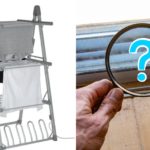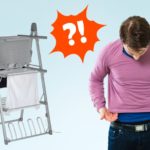Here in the UK it’s very hard to dry clothes in the middle of winter because it’s either always raining, threatening rain, or there are gale-force winds to contend with.
And if you don’t have the luxury of a tumble dryer in your home as a backup option, drying the most basic of laundry can become quite the chore during these times!
So, how do you dry clothes indoors? Easy, you use a heated airer!
But, are indoor heated airers any good? Let’s find out…
Things to Consider When Deciding if a Heated Airer Is Worth It
If you’re considering buying a heated clothes airer for your home, you should check out the points below before you buy one.
Cost per hour
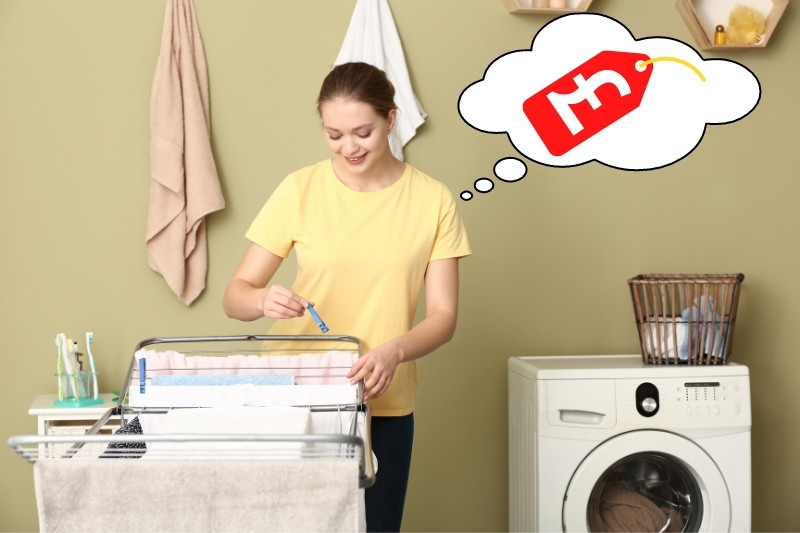
A major benefit of using heated airers is that they are generally cheaper to run in comparison to tumble dryers.
You can, for example, run a heated airer for as little as 3p per hour for smaller models, and up to 6p an hour for larger airers. This typically works out cheaper than a tumble dryer overall.
However, you should keep in mind that ultra-modern tumble dryers are built to be more economical these days. They can dry clothes far quicker than a heated airer, and how much wattage per hour a tumble dryer uses impacts how much a cycle costs to run.
Heated airers, on the other hand, are not the fastest of drying tools. So, you can expect to be using the dryer for many hours at a time, which will inevitably increase the price. Plus, you’re not guaranteed consistent drying times because some materials dry faster than others.
Whereas in a tumble dryer clothes dry more consistently because you can choose a suitable cycle. In turn, you can work out more accurately how long and how much a cycle will cost you.
Drying time
As mentioned earlier, drying times will likely vary significantly from one model airer to another, and this is largely down to build quality, size and wattage being used.
A heated airer can take up to eight hours to dry laundry in some cases, and other times it can take all day and night.
It is often very difficult to estimate how long items will take to dry because there are a plethora of variables to consider. These include: what material you are drying, the size of the dryer, the power of the dryer and how much laundry you plan on drying.
In some cases, for example, heavy jumpers take all day to dry. In turn, this takes up precious drying space and other clothes cannot dry, so you’d have to repeat the whole drying process to dry a whole load of laundry.
Of course, if you buy a much bigger heated airer you do get more drying space, so such problems can be reduced or even eradicated.
But if you don’t have the space or a budget for such a dryer then you might find that drying times will vary, and may even become challenging to manage!
Such lengthy drying times are sometimes seen as a bit of a hindrance with users, but it’s only a small price to pay.
Size and weight
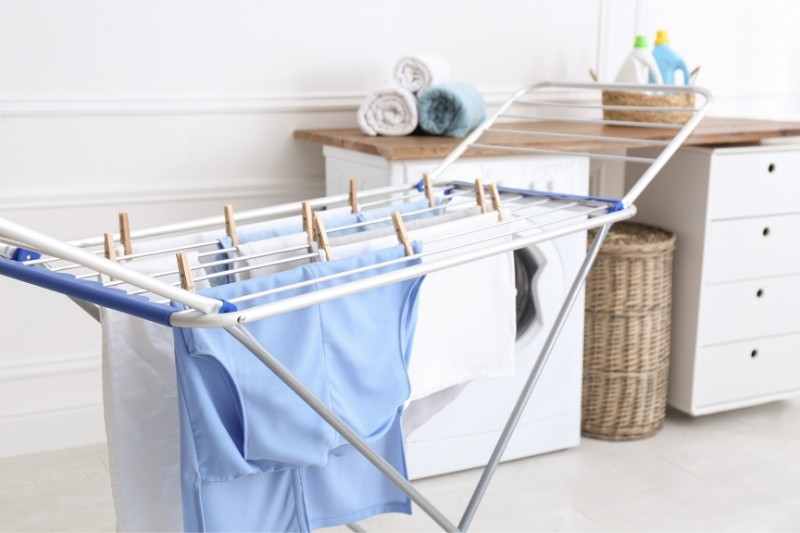
A very likeable feature of heated airers is that they vary in size and weight, so you can buy an airer that suits your washing style and home layout.
Smaller airers, for example, boast six metres of drying space, while larger dryers have up to 21 metres of drying space.
It goes without saying that the less space you have available, the less laundry you will be able to dry. However, if you use the bars on your heated airer wisely you can actually dry a fair amount of laundry at once.
If you have a larger airer you can dry a lot more laundry in one go, and this saves you energy and drying time. You can, for example, dry up to 15kg of laundry at once when using bigger heated airers.
In addition to the above, heated airers are typically lightweight, weighing as little as 7kg in some cases.
So, they’re easy to move around the house! Bigger airers are slightly heavier, but the extra weight adds to its stability, and even with additional weight they are still easy to move around.
You should also keep in mind that because heated airers are usually compact and lightweight, they can be moved around with you. So, if you needed to take the airer with you on holiday, for example, you could do so.
Shape
When it comes to heated airers you can usually buy winged airers, or tall and tiered airers.
If you are going to be buying a winged airer, you will need a lot more room in your home, because as the name suggests, the arms of the airer fold outwards. This design isn’t to everybody’s taste because the airer can look quite cumbersome.
Plus, if you don’t have much room in your home anyway, such a heater would encroach on your personal space.
If you’re more interested in saving space, then the way forward is to look into tall and tired heated airers. These airers, as the name suggests, stand upright and have many tired bars that you can put your clothes on. They are far better to look at and they actually look tidier.
In addition to this, if you have a taller airer you can dry longer items of clothing, like dresses. Although it’s not impossible to dry a dress on a winged airer, it can be a little more challenging. It’s much easier to use a vertical airer if you know you’re going to be drying such items!
It all comes down to individual preference when deciding on what shape airer to buy, but it’s good that you have a choice in the matter!
Storage
The fact that you can store heated airers away is what users really like about them. No matter what airer you buy, you can easily pop it away and pull it out again when you need to use it.
Most heated airers can be packed away with ease, and airers almost half in size when they’re in their compact state.
This is an incredibly convenient feature if you don’t have much space in your home!
Durability
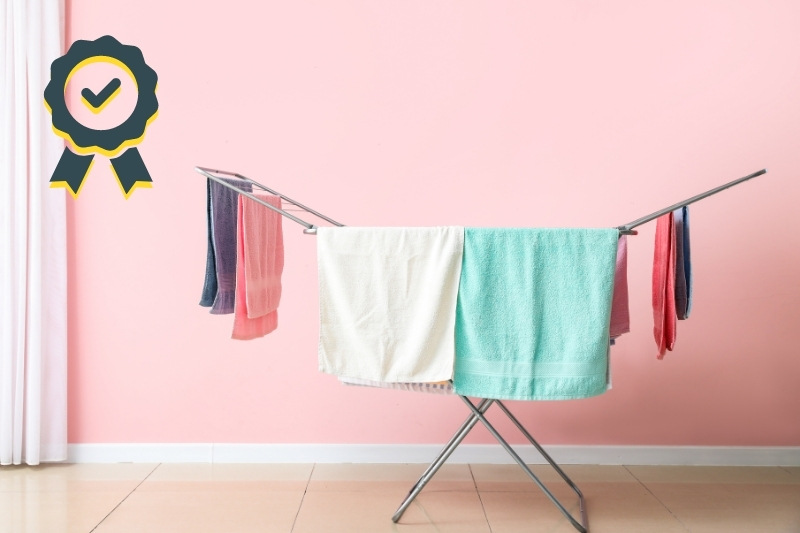
When buying an airer for your house you should think about its durability. And while you might assume that all makes and models are built with quality and heavy weights in mind, that isn’t really the case.
Some lesser-known models cannot withstand a lot of pressure, and this can make them pretty dangerous to have around a home.
If you don’t pick a model that is incredibly stable, can hold the weight you require and has proper feet, you run the risk of the airer falling down and hurting a member of the family. This would aggravate the drying process and could cause harm.
You must always make sure that you pick an airer that you know is made from sturdy material, has feet that are safe, and can hold an appropriate amount of laundry for you.
Most well-known heated airers have been built with durability in mind, but you should always do your own research into the product you wish to purchase.
Different wattages
Heated airers come in different sizes and this usually means that the models come with different wattages. In short, some airers are going to be more powerful than others.
How much power an airer has usually affects how it performs. So, if you had a 100-watt heated airer it may dry your laundry slower than a 220-watt heated airer. This, in turn, may impact how long you have to have your airer on for, and this will increase the running costs in the long run.
Of course, if you pick a bigger and better model then you’ll be guaranteed a better power output, but this does mean that you’ll be paying more for the heated airer in the first place.
Timer and thermostat
All heated airers should come with a built-in thermostat to regulate the temperature of the airer itself. However, you should always double check this out before buying an airer. If your model doesn’t come with one you should really question how safe the airer is.
A timer, on the other hand, doesn’t appear on every heated airer, it is more of a desirable feature.
A timer, as the name suggests, allows you to time drying sessions. This is helpful if you want the drying session to end at a particular time, for example.
Such a feature is a handy one to have, but it isn’t absolutely essential. Further to this, such extras can increase the price of an airer too, so be mindful of them.
Covered airers
If you have the ability to buy a cover for your heated airer then you should do so. Covers help to keep the heat inside, so that it can actually dry the clothes.
Having a cover over a heated airer may also decrease the drying time of laundry too, which, in turn, may increase how energy efficient the airer is.
Not all airers will come with one, like the winged ones, and while they will still work well, a lot of heat may well be lost during the drying process. This may result in the clothes taking much longer to dry, which might be problematic for you.
Lifespan of clothes
Another big plus of using a heated airer is that it can improve the lifespan of clothes. While undoubtedly line drying is the best option, if you can’t do this, many users say that heated airers are the next best option.
According to many heated airer users, clothes feel and last longer when they have been slowly dried by a heated airer. Clothes that have been tumbled dried, become worn out and shrink in comparison.

More environmentally friendly
A major benefit of using a heated airer is that it is more environmentally friendly.
You don’t really use intense power to dry your clothes, instead it’s a slower and more leisurely process, that not only saves you money in the long term, but it’s kinder on the environment too.
Plus, when you use a heated airer you’ve got to be a little more organised and you can’t wash tons of laundry all the time.
This, in turn, makes you more mindful about what you’re washing, how much you’re washing and about your drying process.
Being able to observe such practices may make you alter how you do your washing, which would not only work out greener, but kinder on your wallet.
Cost
The price of heated airers varies based on the following factors:
- Size
- Shape
- Capacity limit
- Extras
- Wattage
The price for heated airers varies from £40 to over £200 in some cases.
Generally, the bigger the heated airer is the more power it’ll require, it’ll usually have a bigger capacity limit, and it’ll likely come with extras which will increase the price.
On the flipside, cheaper airers may be a little flimsier, may not be able to hold much weight and might not have a long lifespan.
It is, however, far cheaper to buy a heated airer than to buy a tumble dryer. A tumble dryer would easily cost you £300 – and that’s before you’ve even used the machine!
So, Are Heated Airers Any Good?
Here’s a quick recap of the main benefits of using a heated airer:
- Great for drying clothes during wet months.
- Excellent for people who lack space in their homes.
- Have good manoeuvrability.
- Running costs are generally low.
- Not too heavy.
- Not too clumpy.
- Varied shapes so you can choose a model for your home.
- Great for storing.
- Greener way of drying clothes.
- Improves overall quality and lifespan of clothing.
- Overall costs aren’t too bad.
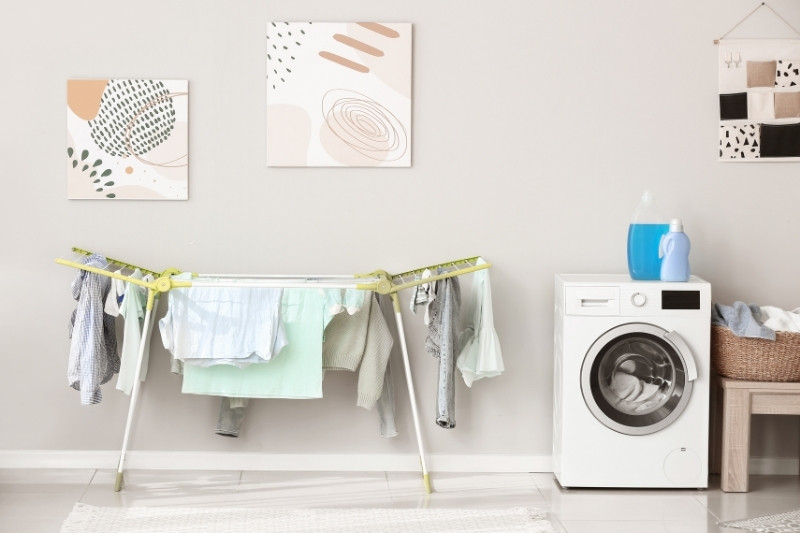
Here are some drawbacks of using a heated airer:
- Cannot always dry a whole laundry load at once.
- Dryer shapes are not suitable for all homes, especially the winged version.
- Drying times can be lengthy.
- Drying times can vary significantly from one load of washing to another.
- Difficult to dry dresses and bigger items, like towels.
- Power cable can be short.
- You might have to remove items from your room to stand the heated airer up.
Overall, heated airers are a good addition to a home. They offer many benefits and may even make an excellent companion to a tumble dryer, if you already have one. It doesn’t have to be one or the other!
And although heated airers have some drawbacks, these are generally negligible. You could work around the weak points and make them work for you instead.
What Heated Airer Should I Buy?
There’s plenty of choice for you to choose from when it comes to heated airers – check out our top picks of heated airers here.
Can You Dry Laundry with a Heated Airer in a Flat?
You most certainly can use a heated airer to dry clothes in a flat! But you can actually try lots of other ways too. Here are some other ways you can dry your clothes in a flat!

Bethan has a passion for exploring, reading, cooking and gardening! When she’s not creating culinary delights for her family, she’s concocting potions to keep her house clean!

